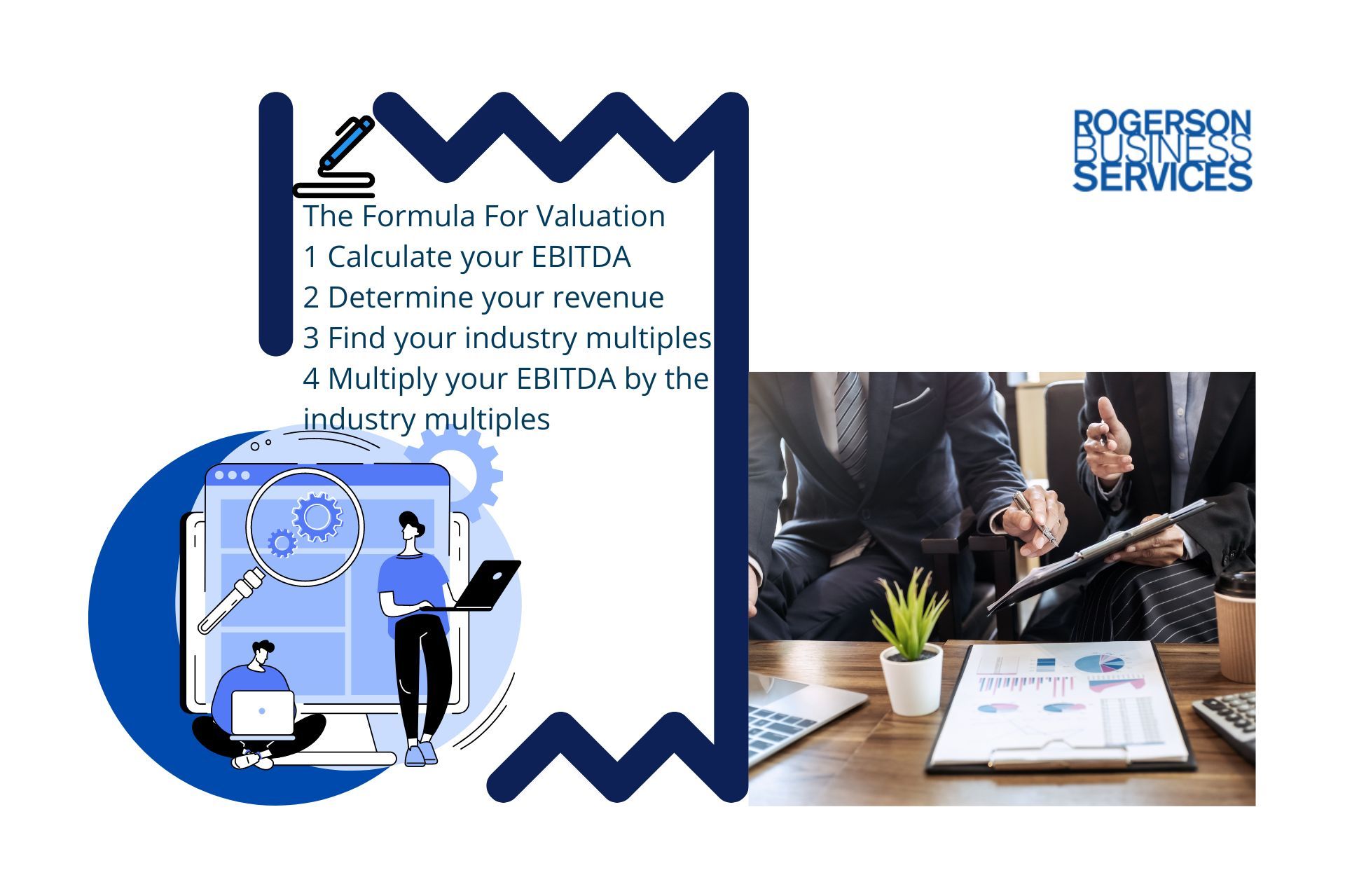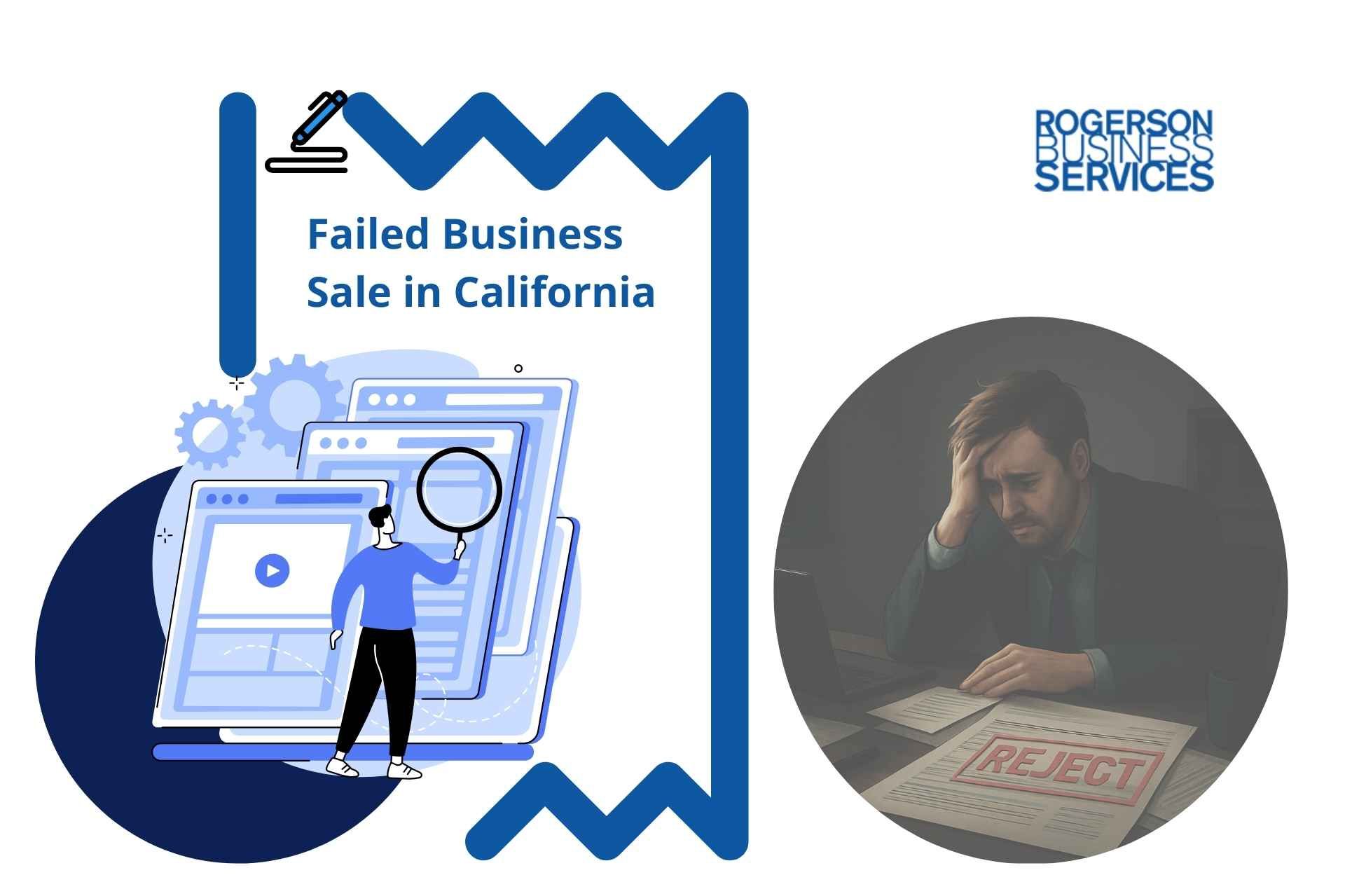How To Calculate Valuation Of A Business
Calculating Business Valuation Explained
Calculate the value of a business is to use EV (Enterprise Value) to EBITDA multiples. This is one of the most commonly used methods for businesses with multiple debt holders and/or equity investors.
Here are 5 other business valuation calculations to consider:
- EBITDA - earnings before interest, taxes, depreciation, and amortization
- SDE - seller's discretionary earnings
- Capitalized Earnings
- Enterprise Value
- EV to EBITDA Multiples - enterprise value to earnings before interest, taxes, depreciation, and amortization
Establishing the true value of your business is essential for negotiations with a potential buyer. Therefore, it’s critical to engage an experienced business valuation service when completing this crucial task. With the right support, you can ensure that all parties involved receive fair and accurate assessments — giving you peace of mind in negotiations.
Business valuations are complex calculations that involve assessing a company’s assets, liabilities, net profits and losses, and potential future projections. A
professional appraiser has the expertise to assess these factors and use sophisticated software tools to
calculate a realistic sale price for your business.
In addition to using the
asset and income-based calculations, a business valuation service should also take into account the potential market value of the company. This means considering the industry, location, and other external factors that could impact its value. In addition to this, an expert valuation professional should be able to provide you with a comprehensive report that explains the valuation process and all of the factors taken into consideration.
Let's dive in...
Business Valuation Calculator
Calculate EBITDA
The recast income statement spreadsheet displays the financial metric known as "Earnings Before Tax, Interest, Depreciation and Amortization (EBITDA)."
This metric serves as a standard for assessing the profitability of owner/operator businesses, used by various professionals including business brokers, appraisers, buyers, and sellers.
When analyzing comparable sales data, the Price/Earnings Ratio incorporates the Seller's Discretionary Cash Flow (SDCF). Brokers utilize a standardized methodology to adjust income statements accordingly.
This approach ensures consistency when comparing small businesses and determining their value for potential buyers and sellers.
EBITDA Calculation:
EBITDA is defined as pretax net profit, inclusive of non-cash income and expenses, discretionary income and expenses, financing costs, one-time expenses, and the Fair Market Value compensation for a General Manager. This calculation also deducts employee equivalent compensation to account for additional working owners and any anticipated increases in fixed expenses.
Procedure:
The process of arriving at the business's EBITDA involves "normalizing" the financial statements, which encompasses the following steps.
First:
Non-cash items are added back to the pre-tax net profit because this cash is available for the owner to utilize.
Second: Discretionary items typically provide benefits to the owner, such as a leased luxury car used primarily for personal purposes or contributions to a charity that could be eliminated without impacting the business.
Third: Financing costs are added back because the earning power of the business is independent of the owner's chosen method of financing. The buyer's consideration of the seller's debt payments is irrelevant to the business's earning power. However, it is important for the buyer to create a capitalization plan to determine their pretax, post-debt service cash flow.
If the buyer intends to assume some of the seller's debts in acquiring the business, this does not influence the business's earning power or valuation. Instead, it is merely one of the buyer's payment methods for the acquisition, similar to a real estate purchase where the buyer assumes the mortgage and provides the remaining amount to the seller in cash.
Fourth:
Typically, one-time expenses are added back to the calculation.
This is because these expenses do not impact the future earning potential of the business. An example of a one-time expense would be the cost of relocating a business to a new location.
Fifth: Only one General Manager or full-time employee is considered.
When evaluating the earning power of a business, it is assumed that there is one General Manager with a salary and benefits that are in line with market norms. If there are other owners or family members working in the business, their compensation needs to be adjusted by adding back their total compensation and then subtracting the cost of hiring an unrelated employee at the market rate for the same job.
Sixth: Nonrecurring sources of income.
Seventh: Non-operational items.
Known increases in fixed expenses: Since the purpose of the EBITDA analysis is to estimate the future earning potential of the business based on the assumptions mentioned above, it may be reasonable to reduce the EBITDA by the anticipated increase in fixed expenses. For example, a scheduled cost of living adjustment (COLA) in the rent for the premises.
Current Yearly Earnings Before Taxes
$1,750,000
Current Yearly Taxes
$225,000
Current Yearly Interest
$150,000
Current Yearly Depreciation and Amortization
$350,000
EBITDA
$ 2,475,000
Find Your Company's Estimated Worth
While the company valuation multiplier serves as a helpful starting point in determining the value of a lower middle market business in California, it is vital to recognize that it is just one of many available methods.
There are several other commonly used methods to determine the value of a lower middle market business, including:
1. Earnings Capitalization: This method values a business based on the principle that its worth equals the present value of its future earnings. The calculation involves dividing the expected future earnings by the required rate of return.
2. Net Asset Value: This method calculates a business's value by totaling the worth of all its assets and subtracting its liabilities. It is particularly useful for businesses with substantial tangible assets such as real estate or equipment.
3. Market Comparable: This method compares the business under evaluation to similar businesses that have recently been sold. Analyzing the sale prices of comparable businesses allows an estimate of the value of the business in question.
4. Discounted Cash Flow (DCF):
This technique calculates the current worth of the future cash flows that a business is projected to generate. The present value is determined by discounting the future cash flows using a discount rate.
5. Rule of Thumb: This approach utilizes a straightforward formula or an industry-specific multiple to approximate the value of a business. It is frequently employed as a convenient and rapid method for valuation, although it may be less precise compared to other methods.
It is crucial to acknowledge that each of these methods has its own set of advantages and disadvantages, and certain methods may be more suitable than others depending on the specific business and industry. Additionally, a combination of methods can be employed to achieve a more precise and comprehensive valuation.
Consult with a
valuation expert
to guide you in finding your company’s worth.

EBITDA Vs. SDE
What’s the Difference?
When calculating a business's value, most valuation professionals will utilize either the
EBITDA
(Earnings Before Interest, Taxes, Depreciation, and Amortization) or SDE (Seller’s Discretionary Earnings) method. Knowing the difference between these two methods and how they are used is critical for understanding your business’s worth.
EBITDA represents the company’s total operating income and is a measure of profitability for the business. It’s calculated by adding back depreciation and amortization to the net income. This method is most commonly used in larger companies and businesses with complex financial structures.
SDE, on the other hand, is a more simplified calculation that is usually used for smaller businesses. It includes all income, expenses, and discretionary expenditures incurred by the business owner. Basically a full assessment of your
working capital
or cash flow. This method is generally used to calculate the business’s adjusted net income that takes into account all of the owner’s expenses.
Multiples are a key factor in the business valuation process
and can be used to determine a company’s approximate value using either EBITDA or SDE. To calculate a multiple, the appraiser takes into account the company’s financial performance and then multiplies this by an industry-specific factor to arrive at the sale price.
For example, when using the EBITDA calculation method, a business appraiser might look at the company’s operating income and then multiply this by a multiple of five or six times to arrive at the sale price.
When using the SDE calculation method, a business appraiser might look at the company’s adjusted net income and then multiply this by a multiple of two or three times to arrive at the sale price.
In both cases, multiples can be adjusted based on the company’s current performance, industry trends, and other external factors to ensure an accurate valuation.
To get the highest possible price for your business, it's essential to enlist a nearby business valuation company. Business appraisal experts also provide advice throughout the entire selling process so you never have to worry - they'll be there with you from start to finish!
Capitalized Earnings
Another important factor in determining the value of a business is its capitalized earnings. This method uses the company’s net income to calculate the present value of the business’s future earnings. The appraiser considers how much money the company is expected to earn in the future and then determines the present value of these earnings by discounting them back to their current worth.
This method works best with businesses that have consistent and predictable cash flow. The appraiser can then factor in any potential growth or decline in the company’s revenues to arrive at a fair market value for the business.
In addition to considering the company’s current financial performance, the appraiser will also need to factor in the industry and market conditions to ensure a fair and accurate valuation.
This is calculated by taking the
company’s adjusted net income, dividing it by a capitalization rate (which is determined by the appraiser), and then adjusting the resulting value for any potential increases or decreases in the company’s future earnings.
Discover More About Sellers Discretionary Earnings (SDE) - Click here
In 7-Steps You'll Learn How To Calculate Your Business Value - Click here
Best Calculation Methods Revealed To Quickly Find Your Company's Worth - Click here

EV to EBITDA Multiples
Another method of valuing a business is to use EV (Enterprise Value) to EBITDA multiples. This is one of the most commonly used methods for businesses with multiple debt holders and/or equity investors.
This method values the business based on its enterprise value, which is calculated by subtracting the debt and other liabilities from the company’s assets. This number is then divided by the company’s EBITDA (Earnings Before Interest, Taxes, Depreciation, and Amortization) to arrive at an EV to EBITDA multiple.
This multiple is then multiplied by the company’s current EBITDA to arrive at an approximate value of the business. This number can then be adjusted based on the company’s current performance, industry trends, and other external factors to ensure an accurate valuation.
In the end, valuing a business involves several calculations.
To arrive at the fair market value of a business, appraisers typically use one or more of the following methods: EV to EBITDA multiples, capitalized earnings, and sales multiples. With EV to EBITDA multiples, the appraiser looks at the company’s enterprise value and then divides this by its EBITDA to arrive at a multiple.
Capitalized earnings use the company’s net income to calculate the present value of the business’s future earnings.
Finally, with sales multiple, appraisers look at the company’s adjusted net income and then multiply this by a multiple of two or three times to arrive at the sale price. Multiples can be adjusted based on the company’s current performance, industry trends, and other external factors to ensure an accurate valuation.
By taking into account all of these factors, a business valuation service can help you get the maximum value for your business. With expert advice and an accurate assessment of your company’s value, you can be sure that you will get the best deal when selling your business in California.
Interested To See Business Valuation Report Types?
Click here
By taking into account all of these factors, a business valuation service can help you get the maximum value for your business. With expert advice and an accurate assessment of your company’s value, you can be sure that you will get the best deal when selling your business in California. -->>






